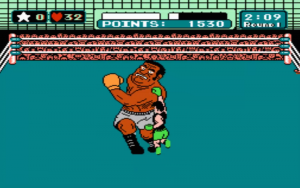Independent Learning Requirement: Games and Story
by Kyle Ott
- May 2
- in
Games, like VR or 360, are a strange and often difficult medium to tell stories with. However, like VR and 360 video games can be a compelling and visceral way to integrate an audience with themes. Slaying the Dragon has a lot of great insights into story telling within the medium of games. While there is quite a bit of information in the text here are four important things I learned about gaming and game stories from Slaying the Dragon.
- Games have rules.
This one seems self explanatory but it is one of the things that bears mentioning. When we think of games its easy to think of just hacking apart monsters or chucking explosives at every random enemy (and even innocent bystanders, because let’s be honest we’ve all seen game play from Grand Theft Auto). However, its important for games to have a set of rules and a metaphorical code to accompany that actual code. Whether its rudimentary rules like “getting shot means you die”. To more complex governing principles such as “if you find these clues you will go into the boss fight with the ghost dragon with extra ammo”. This relates to 360 storytelling where classic rules include principles like “if the audience looks this way, they will see the creepy girl coming towards them.” Sounds simple in practice but the idea of having a structure is important in order to have a coherent story.
- Context is everything
This is another one that is often swept under the rug but is absolutely vital to storytelling. In the world of gaming this means setting up a world that players can actually get lost in. Its less about an implicit story (dialogue, cut scenes, and in game exposition) as it is about subtler attempts to give context. Consider for example games like dark souls that insert little bits of lore about the world into the description of its items. Although these don’t actually go out and say what the story is they create a sense of context that draws players in. VR relies on this just as much. Getting the viewer to buy into your world through use of audio, and subtle visual elements is a must. Consider for example, the harrowing recreation of domestic violence that was Kiya. The entire experience was punctuated by recreations of the actual house where the crime happened, live sound bites of the 9-1-1 call, and gunshots. Now imagine how that sense of immersion would be shattered if those contextual elements were taken out and replaced with a Beasty Boys soundtrack. Suddenly a poignant story loses a lot of its punch.
- Conflict
Another important thing about story telling in games is that there has to be some kind of conflict. In many games this conflict is actual, well, conflict. Examples of this include Call of Duty where bullets and enemies fly at you in equal measure. In some games however this conflict is a little more esoteric. In games like Joureny the conflict that needs to be overcome is a personal one. How will you handle the vast expanse of nothing to get to a goal you can neither fathom nor foresee? In the game Dear Esther the conflict is entirely emotional? Although the experience does feature vast elements of horror the most terrifying elements aren’t the creaking floorboards or absent home. It’s the fact that bit by bit, you discover the world your character, and by extension yourself, have built has shattered. It’s the piecing together of the narrative and what happened to drive a seemingly functioning family apart that proves to be the most harrowing part of the experience.
While not as common in 360 video as it is in VR conflict is still an important part of storytelling in these emerging mediums. For our story Royal Flush the conflict was under the existing story. Someone had died and the viewer needed to piece together who did it. For other simulations like Horde Z on the consumer vive, conflict takes on the more zombie killing, mowing down the hordes of the dead with a machine gun kind of variety.
- Its not always about a conventional story.
With books and movies the audience member is a passive receiver of information. Characters develop at their own pace, the world grows from events that occur in line with the story (and more to the point will occur the same way every single time). If you watch something like Diehard, nothing will change from your first viewing of the movie when compared to your 50th. This is of course different from games. In a great video game the paths that you take, the actions you do and the feats you accomplish all have a tangible impact on the world. Everything from finishing a level in a different way, to completely altering a stories final outcome is possible in a game. Basically a great game allows someone to actively shape and alter the story.
While you can’t actively shape a story in 360 video it does feature a need for audience movement. It’s important to make the area around the camera interesting so that the audience member can explore the scene visually. VR, with its ability to actually drop players/audience members into a scene. VR games like Hordez and Brookehaven Experiment play more like traditional game by giving players the ability to battle back against monsters. While there’s no real story in a lot of these VR games the potential is certainly there.


COMMENTS